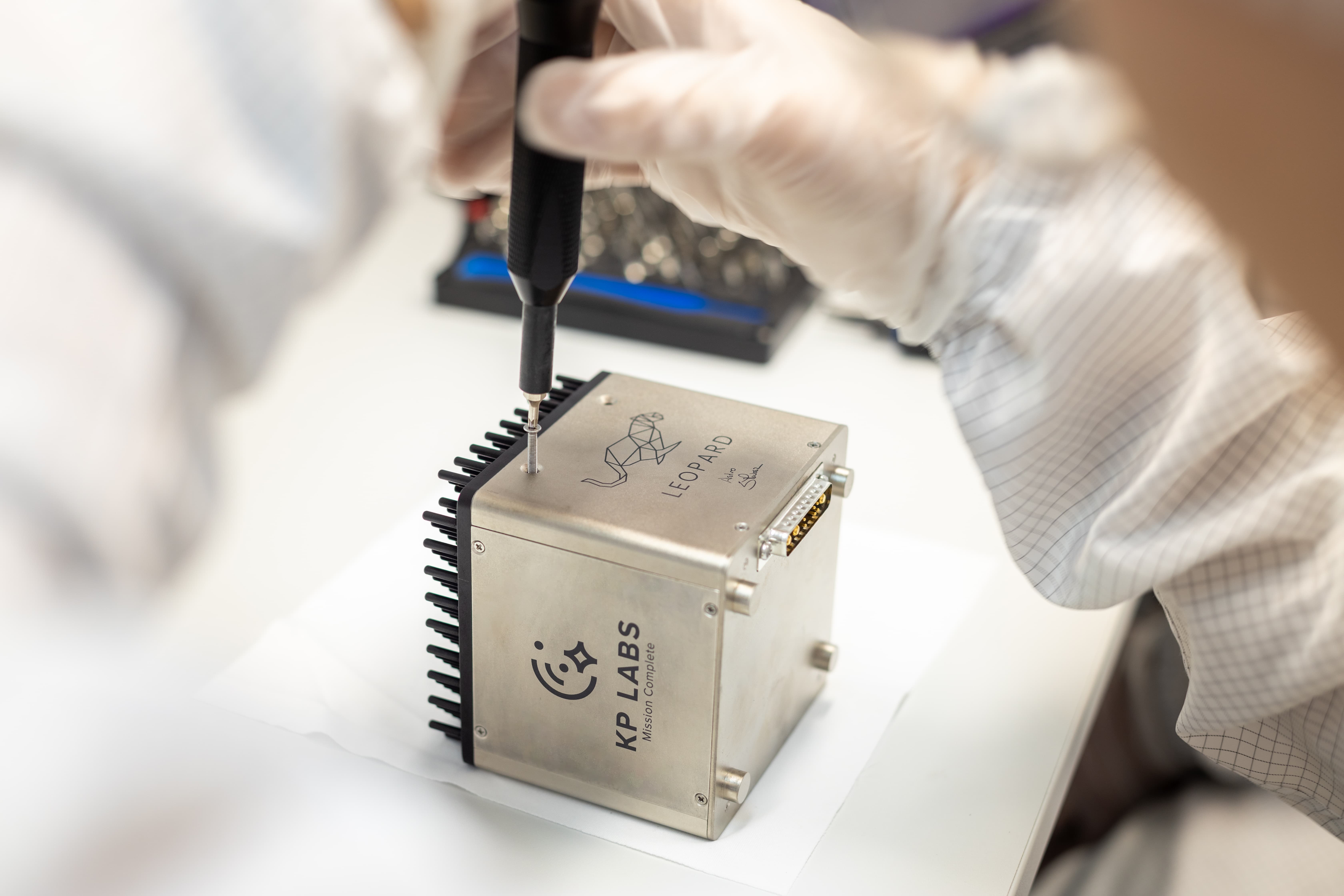LeopardISS: Six Months in Orbit

Half a year after launch, LeopardISS - a data processing unit designed and built by KP Labs in Gliwice - continues to operate aboard the International Space Station, running AI-related experiments inside ESA’s Columbus module. Although Polish astronaut Sławosz Uznański-Wiśniewski has completed his mission, the hardware he activated remains fully operational, serving as part of IGNIS - Poland’s first scientific and technological mission on the ISS. KP Labs and Poznań University of Technology can now present the first results of their experiment.
LeopardISS is an advanced Data Processing Unit (DPU) designed for experiments involving artificial intelligence. Launched on April 22, 2025 aboard a SpaceX resupply mission, it was installed in the ICE Cubes Facility, a platform operated by Space Applications Services that provides continuous power, communications and data handling. This setup enables remote supervision from Earth without involving the ISS crew, and the activation procedure, carried out with the support of the Polish astronaut, confirmed correct system operation.

The first phase of the project focused on software developed at Poznań University of Technology in cooperation with Politechnika Innowacje and ESA Phi-Lab Poland. Researchers, PhD candidates and students deployed their algorithms on a functioning orbital platform for the first time. The goal was to verify whether autonomy solutions developed in Poland could operate under space constraints such as radiation, limited compute resources and the absence of a conventional system reset. During this phase, LeopardISS executed applications developed in Poznań and processed data stored in its onboard memory directly in orbit.
The core challenge addressed by the experiment relates to autonomous navigation and understanding the environment: the key capabilities in space robotics. On the Moon or Mars, there is no GPS; rovers must independently determine their position and build maps. This makes SLAM (Simultaneous Localization and Mapping) essential. The Polish experiment focused on SLAM algorithms that detect characteristic points in camera imagery and reconstruct 3D geometry. This enables a computer to orient itself in an unknown environment, intuitive for humans, but computationally intensive for robots operating in real time.
To validate the software in orbital conditions, the team prepared data sets reflecting rover traverses across the lunar surface, each accompanied by reference maps and movement trajectories. This allowed precise comparison between algorithm outputs and ground-truth data. The tests showed high 3D reconstruction accuracy and correct pose estimation. Critical processes: mapping and motion estimation, performed in line with the original design assumptions, confirming the correct operation of the software in the orbital environment.

For KP Labs and Poznań University of Technology, this represents an important milestone. It shows that the developed solution can form a basis for future autonomous navigation systems in space robotics. In planetary missions, such algorithms will enable rovers to explore without constant supervision, avoid obstacles and make real-time decisions. In orbital operations, they will support satellite inspection, rendezvous and object capture - capabilities essential for the growing field of satellite servicing and infrastructure protection.
The results also represent a step toward building flight heritage for Polish hardware and software, which is a crucial factor in the space sector. Even highly advanced technologies often cannot be used in real missions without in-orbit validation. Thanks to the LeopardISS experiment, KP Labs’ hardware and the algorithms developed in Poznań can be considered proven and ready for operational use, increasing their credibility for future ESA, NASA and commercial missions.
LeopardISS is one of thirteen experiments carried out within the IGNIS program, coordinated by the Ministry of Development and Technology, the Polish Space Agency and ESA. The program aims to support the development of Polish space technologies by enabling in-orbit testing, which was a capability long missing in Poland. As a result, both academia and industry gain specialists who not only design space technologies but also prepare them for the requirements of orbital missions.
Six months after activation, LeopardISS continues to operate on orbit without requiring crew intervention. The platform is ready for additional test campaigns, including those proposed by external teams. ESA Phi-Lab Poland plans further development of the Poznań software using both orbital data and analogue environments such as the lunar yard in Kąkolewo.

A key outcome of the project is the experience gained while working with AI systems in orbital conditions. Every software update and every data transfer had to be designed with potential disturbances in mind and constraints that simply do not occur in laboratory environments. LeopardISS also functions as an educational platform: students involved in the project had the rare opportunity to develop code that operates not in simulation but in space.
The solutions developed for LeopardISS were designed with scalability in mind. The software can be adapted for future mission platforms and expanded with additional modules such as object detection, classification or environmental-change analysis. These capabilities will be essential for future lunar infrastructure programs such as NASA’s Artemis or ESA’s Argonaut, where robots will operate continuously, often without human involvement.
The project builds on experience from KP Labs’ Intuition-1 mission, which is the first satellite equipped with the Leopard processing unit. LeopardISS extends these capabilities by enabling algorithm testing without the need to build a new satellite or wait for another launch window, significantly shortening development cycles and improving competitiveness in the global space sector.
The strategic value of the project is clear. As orbital infrastructure becomes more crowded and exploration missions increase, autonomous systems become a requirement rather than an option. LeopardISS provides the data necessary for supporting the development of autonomy for future exploration missions.
More news
Stay informed with our latest blog posts.
.png)








